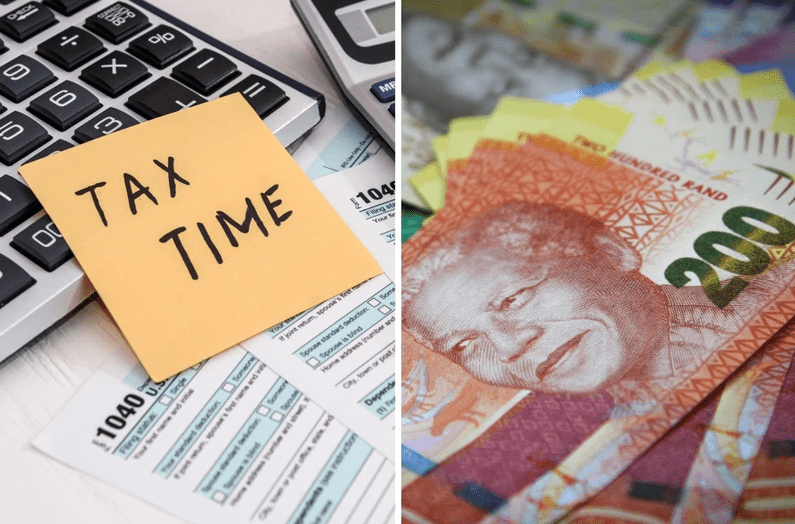
SARS publishes Tax Statistics for 2023: R2.07 trillion collected
National Treasury and the South African Revenue Service (SARS) have jointly published the 16th annual edition of the Tax Statistics.

National Treasury and the South African Revenue Service (SARS) have jointly published the 16th annual edition of the Tax Statistics.
ALSO READ | The top FIVE things buyers look for when purchasing a home
The 2023 edition provides an overview of tax-revenue collection and tax-return information for the 2019 to 2023 tax years, as well as for the 2018/19 to 2022/23 fiscal years.
The mandate of SARS is to collect all tax revenue due by ensuring optimal compliance with tax and customs legislation.
In the 2022/23 fiscal year, SARS collected R2.07 trillion in gross tax revenue (R183 billion or 9.7% more than in the prior year), refunded taxes worth R381 billion (R60 billion or 18.7% more than in the prior year), and netted tax revenue amounting to R1.69 trillion (R123 billion or 7.8% more than in the preceding year).
A broad recovery in tax bases and higher-than-average commodity prices supported the growth in tax revenues. However, there were several risks impacting on tax revenue collections for the 2022/23 fiscal year, which included the prolonged effects of global geo-political tensions, energy supply risks, constrained logistics networks, labour and social unrest, as well as weaker global and domestic economic growth and heightened inflation risks.
MUST READ | SA to Perth, Australia: SAA announces start date for flights
Compliance revenue secured from focused activities and efforts by SARS yielded R231.8 billion for the 2022/23 fiscal year, R16 billion or 7.5% more than in the preceding year. The total value of trade facilitated by SARS for the 2022/23 fiscal year was R3.9 trillion, R0.6 billion or 18.4% increase since the previous year.
Key figures in the 2023 Tax Statistics:
- Chapter 1 of the bulletin shows that the Total tax revenue collected by SARS increased from R1 287.7 billion in 2018/19 to R1 686.7 billion in 2022/23, growing at a compounded annual growth rate (CAGR) of 7.0% over this period. This is lower than the rate of 7.4% attained for the period between 2013/14 and 2018/19.
- In aggregate, the largest sources of tax revenue remain Personal Income Tax (PIT) at 35.7%, Value-added Tax (VAT) at 25.0% and Corporate Income Tax (CIT) at 20.6%. These revenue sources comprised 81.3% of total tax revenue collected. The fuel levy, together with specific excise and customs duties, accounted for 12.4%, whilst other taxes made up the remaining share of 6.2%.
- The tax-to-GDP ratio increased from 23.7% in 2018/19 to 25.1% in 2022/23, the highest ratio attained since 1994/95. Post-COVID-19 economic recovery underpinned tax revenue growth, resulting in a buoyancy ratio of 2.0 in 2021/22, which moderated to 1.2 for the 2022/23 fiscal year.
- Chapter 2 of the publication highlights that by 31 March 2022, the PIT register had grown annually by 4.1% to 24.8 million individuals (and by a further 4.5% to 25.9 million at the end of March 2023). The number of individuals expected to submit income tax returns was 7.1 million for the 2019 tax year. This count decreased to 6.8 million for the 2021 tax year but increased again to 7.1 million for the 2022 tax year. These count changes are mainly due to changes in the minimum tax threshold for submission of returns. Published assessed data for individual taxpayers indicated that, of the 7 068 925 taxpayers expected to submit returns for the 2022 tax year, 5 989 787 (84.7%) taxpayers have been assessed. Personal income tax, geographic, demographic, and other analyses of the assessments of the taxpayers who had been assessed as at the end of August 2023 for the 2022 tax year showed that:
- 2 319 473 (38.7%) of assessed taxpayers were registered in Gauteng.
- 775 508 (36.3%) of assessed taxpayers lived in the Johannesburg Metro and were taxed on an average taxable income of R472 982.
- 1 533 415 (25.6%) of assessed taxpayers were from 35 to 44 years old.
- 3 070 111 (51.3%) of assessed taxpayers were male; 2 884 706 (48.2%) were female.
- Assessed taxpayers reported aggregated taxable income of R2.1 trillion and tax liability of R447.6 billion. The average tax rate was 21.8% compared to 21.3% in the previous tax year.
- Income from salaries, wages, pension, overtime and annuities accounted for 75.5% of total taxable income.
- Statistics for Company Income Tax (CIT) in Chapter 3 reveal that, out of the 1 057 040 companies assessed by 30 September 2023 for the 2021 tax year, 20.7% declared a positive taxable income, 52.6% had taxable income equal to zero, and the remaining 26.7% reported an assessed loss. Of the companies assessed, 432 large companies (0.2% of the companies with positive taxable income) had taxable income of more than R200 million and were liable for 67.1% of the CIT assessed. The Financial intermediation, insurance, real-estate, and business-services sector accounted for 253 241 (24.0%) of the assessed companies and was liable for 30.8% of the CIT assessed, contributing the most among all the sectors.
- Chapter 4 shows that in 2022/23, 80.8% of active Value-Added Tax (VAT) vendors were companies and close corporations. These vendors contributed 92.6% to Domestic VAT payments and received 92.8% of the VAT refunded. Although individuals (sole proprietors) composed 11.5% of active VAT vendors, they contributed 1.9% to Domestic VAT payments and received 0.7% of the VAT refunded.
- As detailed in Chapter 5, Import VAT and Customs Duties accounted for 15.1% and 4.4% of the year’s Total Tax Revenue, respectively. In aggregate, these revenue sources accounted for 19.5% of Total Tax Revenue, which was higher than the 17.1% average attained over the preceding five fiscal years. For the 2022/23 fiscal year:
- Import VAT was collected in the main from the importation of Machinery and Electronics (26.4%); Chemical Products (13.8%) and Vehicles, Aircraft and Vessels (11.2%). Import VAT from the top-three contributing economic sectors made up 87.7% of the total, namely Wholesale and retail trade, catering, and accommodation sector (Tertiary) at 38.2%, followed by the Manufacturing sector (Secondary) at 30.8% and Financial intermediation, insurance, real-estate, and business-services (Tertiary) (18.6%).
- The largest contributors to Customs Duties were Vehicles, Aircraft and Vessels (29.0%); Textiles and Clothing (15.9%); Food, Beverages and Tobacco (13.4%) as well as Machinery and Electronics (12.3%).
- Finally, Chapter 6 deals with other taxes and collections, such as Capital Gains Tax (CGT), Transfer Duty, Mineral and Petroleum Resources Royalty (MPRR), Southern African Customs Union (SACU) payments and Diesel refunds. In 2022/23, SARS raised R22.2 billion in capital-gains tax, of which R9.8 billion was attributable to individuals and trusts and R12.5 billion to companies. Since the introduction of capital-gains tax in October 2001, SARS raised an aggregate of R211.5 billion, with R98.4 billion from individuals and trusts and R113.1 billion from companies. MPRR payments by extractors contracted by R3.1 billion (11.0%) from R28.5 billion to R25.3 billion because of a decline in platinum and iron ore commodity prices. This contraction was not as severe as expected due to a surge in coal prices that partially offset the decline in MPRR payments. The SACU Common Revenue Pool (CRP) collections rebounded by 19.7% to R134.6 billion in 2022/23 from R112.4 billion in 2021/22. The 2022/23 Customs Revenue Pool collections of R134.6 billion exceeded the revised estimate of R133.9 billion by R0.76 billion (0.6%). South Africa contributed 97.4% to the Customs Revenue Pool total in 2022/23. Shares received by South Africa in 2022/23 amounted to R34.4 billion, equal to 44.1% of the R78.1 billion shared revenue pool. The portion for Botswana, Eswatini (formerly Swaziland), Lesotho and Namibia (commonly referred to as BELN) amounted to R43.7 billion (55.9%).
The 2023 Tax Statistics documents are available on the SARS and National Treasury websites at www.sars.gov.za and www.treasury.gov.za.
To access the Tax Statistics publications, visit the Tax Statisticswebpage.
